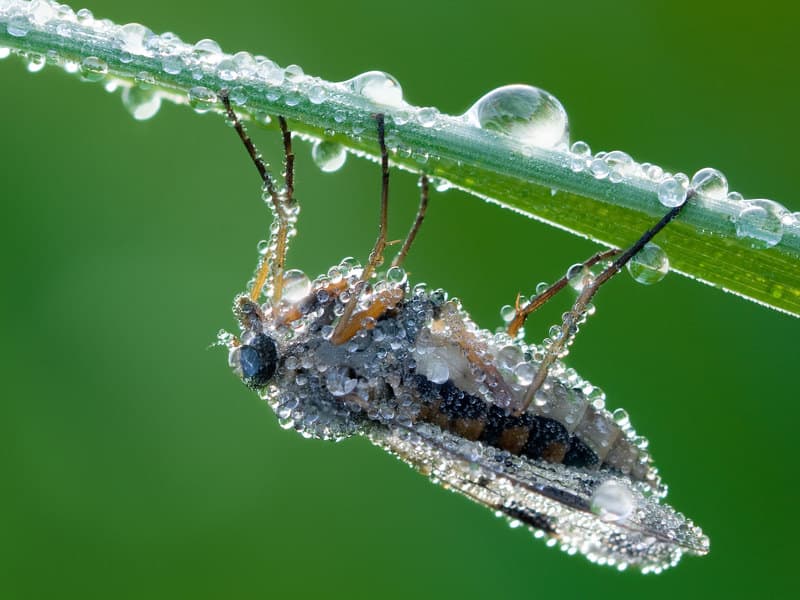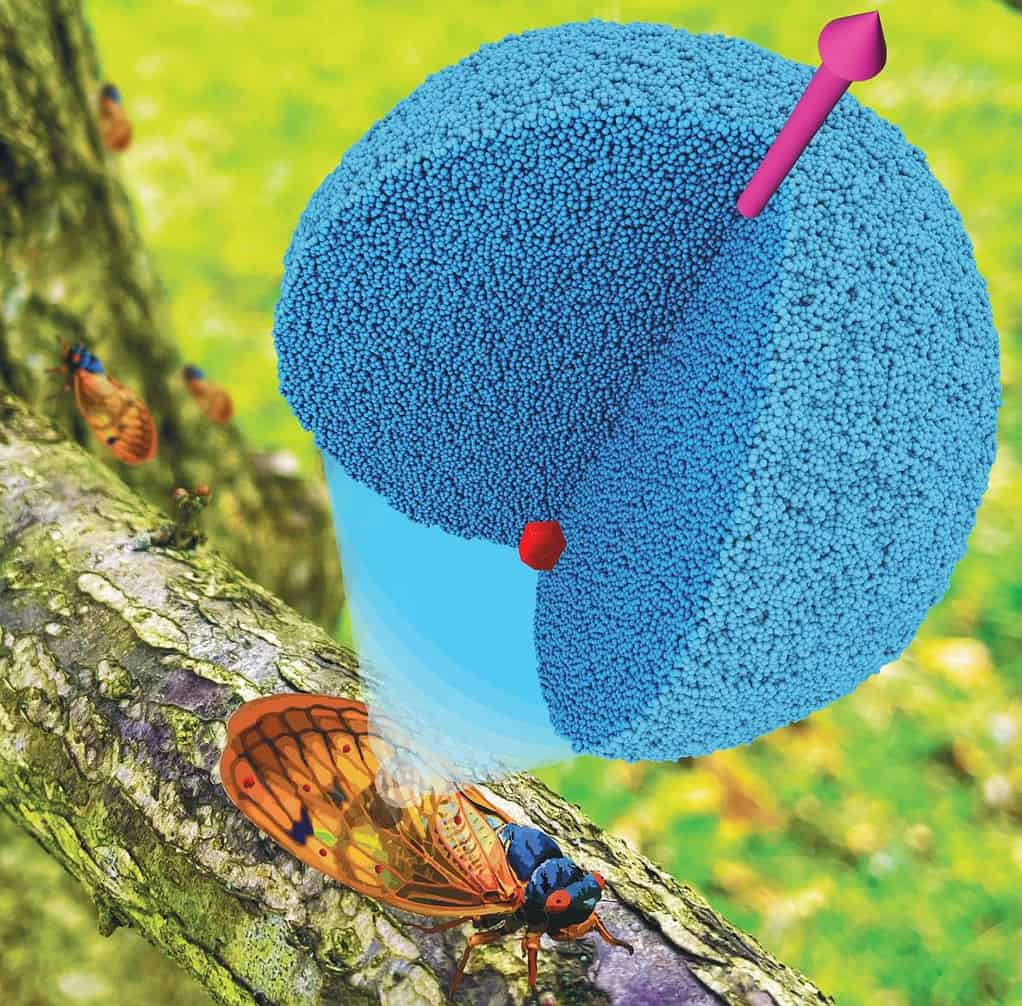
If you’ve ever seen a dew-covered insect, it’s pretty impressive. The insect just stays there, covered in perfect round droplets of water that somehow just don’t soak in. Of course, if water did go into their wings, it would be a problem as it would make the wings heavier, and flying more difficult. But insects don’t just have water-repellant wings: they use this repelled water to clean up dirt and other contaminants as well.
It’s not just insects that developed this ability. Geckos and some plants also developed this ability, in a striking example of convergent evolution. But for us humans, this ability was out of reach. So a team of researchers from the University of Edinburgh in Scotland got to work.
They started with computer simulations. They used the supercomputer ARCHER2 to simulate the water-repellant mechanisms at play in cicadas’ wings. They found that this water-repelling ability lies at the interplay of three elements: the forces of attraction at play between the water droplets, the contaminant, and the molecules on the surface of the insect’s wings. Based on this interplay, the cicadas can clean their wings in two ways.

The first scenario is when the force of the water droplet is higher than the force pinning the contaminant to the surface. In this case, the pollutant is absorbed by the droplet as it rolls off. The other case is more spectacular. Essentially, the lifting forces of lots of droplets merging together can be used to catapult the pollutant. Essentially, the insects can create a sort of water balloon from multiple droplets that sucks off the pollutant.
We now have a better understanding of how surfaces can be passively decontaminated without using a power source. This work has a broad scope for future research and the development of new experiments for self-cleaning surfaces.
This research reveals the critical parameters required for contaminants to be removed effectively from surfaces and opens up new avenues for exploiting precision assembly in future electronics and biosensors.
Researchers are now looking to incorporate this approach into man-made objects like solar panels, car windshields, or even outdoor sensors. The ability of an outdoor material to use water to clean itself is valuable and could save a lot of money in the long run (for instance, solar panels are notorious for losing efficiency when they get covered by dirt).






